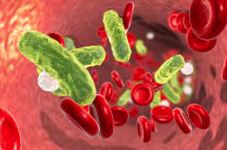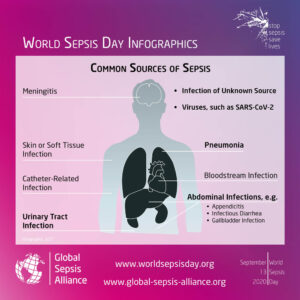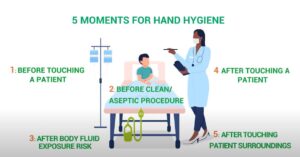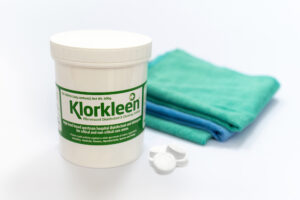Sepsis is potentially life-threatening
In 2011, the Sepsis Alliance selected September as Sepsis Awareness month1. Sepsis is a potentially life-threatening condition which occurs when the body responds to an infection2. It may also be referred to as septicaemia or blood poisoning. Sepsis affects up to 1.7 million people and is responsible for 350,000 adult deaths in the US each year1,3. It is estimated that 1 in 3 people who die in a hospital have had sepsis during their hospitilisation3.
How does Sepsis Occur?
Sepsis can occur when an infection that you already have, triggers an extreme chain reaction throughout the body. Infections that lead to septicaemia most often start in the lungs, urinary tract, skin or gastrointestinal tract3. Sepsis can be especially hard to spot in babies, young children, and those who have difficulties communicating4. Sepsis cannot be spread from person to person, however, the infection which can lead to sepsis is easily transferable.
Due to the range of infections which can cause sepsis, the symptoms are varied. These include fast breathing, high or low body temperature, slurred speech, severe muscle pain, dizziness and nausea, diarrhoea and changes in mental state, including confusion. Those at severe risk for sepsis included adults over 65, people with weakened immune systems, people with chronic medical conditions, children under 1 and people who have recently been hospitalized.
Prevention
Prevention of sepsis involves good hygiene practices, healthcare assistants, doctors and nurses should ensure to wash/disinfect hands when attending to patients. That may be several times during the visit, depending on the activity, and procedure being performed. Knowing the signs and symptoms and acting fast. Sepsis is considered a medical emergency and needs to be treated quickly. If you or a loved one has an infection that is not getting better, you should get medical care immediately. Find out how to prevent sepsis in this short video from the WHO (World Health Organisation)
Infection Prevention
When we talk about infection prevention, it is also extremely important to highlight surface disinfection.
At Medentech, we manufacture a range of high-level broad-spectrum NaDCC disinfectant tablets that are used in hospitals globally to kill harmful viral and bacterial pathogens on surfaces. Our products Klorsept and Klorkleen 2, are included in the EPA N list of products that meet EPA’s criteria for use against viruses like SARS-CoV-2 and are approved by EPA as fast, effective against surface biofilm and C. diff Spores. For more information on the sustained residual efficacy of our products on surface biofilm and C.diff click here
References
1 https://www.sepsis.org/get-involved/sepsis-awareness-month/
2 https://www.mayoclinic.org/diseases-conditions/sepsis/symptoms-causes/syc-20351214





